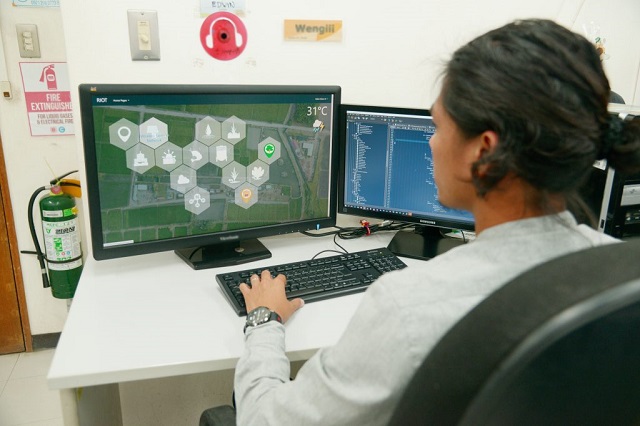
Numbers don’t lie.
As centerpiece of Philippine agriculture, availability of up-to-date statistics on the performance of the rice industry is of big help for decision-makers and other players to implement the next key programs, research activities, and interventions.
Accepting the challenge, DA-PhilRice has launched the Statistical Laboratory and Data Center (StatLab) and the PhilRice Data Analytics Initiative (RiceLytics) to respectively expand its data management and analysis capacity, and to provide rice Key Performance Indicators (KPIs) serving as baseline for policy formulation.
Confident conclusions
Established in 2019, the StatLab helped researchers to come up with more impartial evidence-based decisions through the provision of consultations, seminar-workshops, and other data science support services.
Nefriend Francisco, the then institute statistician, led the conduct of 24 traditional and online training in Nueva Ecija, Batac, Bicol, and Negros branch stations. Among the refresher courses were statistics, data collection, survey methodology, sampling and experimental design, and data processing and management, which were also packaged into training videos. The StatLab will also construct a library of codes and syntax for commonly used statistical analyses applied to DA-PhilRice R4D studies, which will be collected and updated annually.
Newly designated statistician Aphrodite Ortiz said establishing a data analytics center is one of the next steps in upgrading the StatLab. “It will focus on the development and implementation of a data lake architecture and data warehouse systems to centralize data, produce operational business intelligence, conduct advanced analytics, and provide a data archive platform,” Ortiz explained. Expanding the pool of statistical experts is also part of their to-do list to ensure the use of proper statistical methodologies and analytical frameworks of DA-PhilRice R4D initiatives.
Easily accessible, understandable
RiceLytics, a two-year project, is bound to provide essential KPIs on the status of rice farmers and rice value chain through an online data analytics dashboard.
“The challenge we would like to address is the unavailability of a comprehensive reporting system that can be easily accessed and understood by the public, especially the decision-makers,” said Nehemiah L. Caballong, data analytics manager.
Caballong elaborated that there is a need for a system where rice insight seekers will only have to access a single reference portal that translates vast data and information into a comprehensive yet easy-to-grasp knowledge – through data analytics, that is possible.
The RiceLytics portal features historical, current, and predictive information about rice farmers such as basic profile, concerns, farming techniques, preferred technologies, aspirations, and capabilities. For the rice industry, data on rice area, production, yield per hectare, self-sufficiency, consumption, government goals, and future performance requirements can be viewed.
Inspired by the COVID-19 dashboard launched by the Department of Health, this will also reinforce the implementation of the Rice Competitiveness Enhancement Fund components handled by DA-PhilRice through the monitoring and evaluation of seed distribution and trainings. “This system will become vital in developing relevant policies, laws, regulations, programs, interventions, research activities, and development initiatives,” Caballong predicted.
Housed at the Socioeconomics Division, the project is funded by the Department of Science and Technology-Philippine Council for Industry, Energy, and Emerging Technology R&D.




